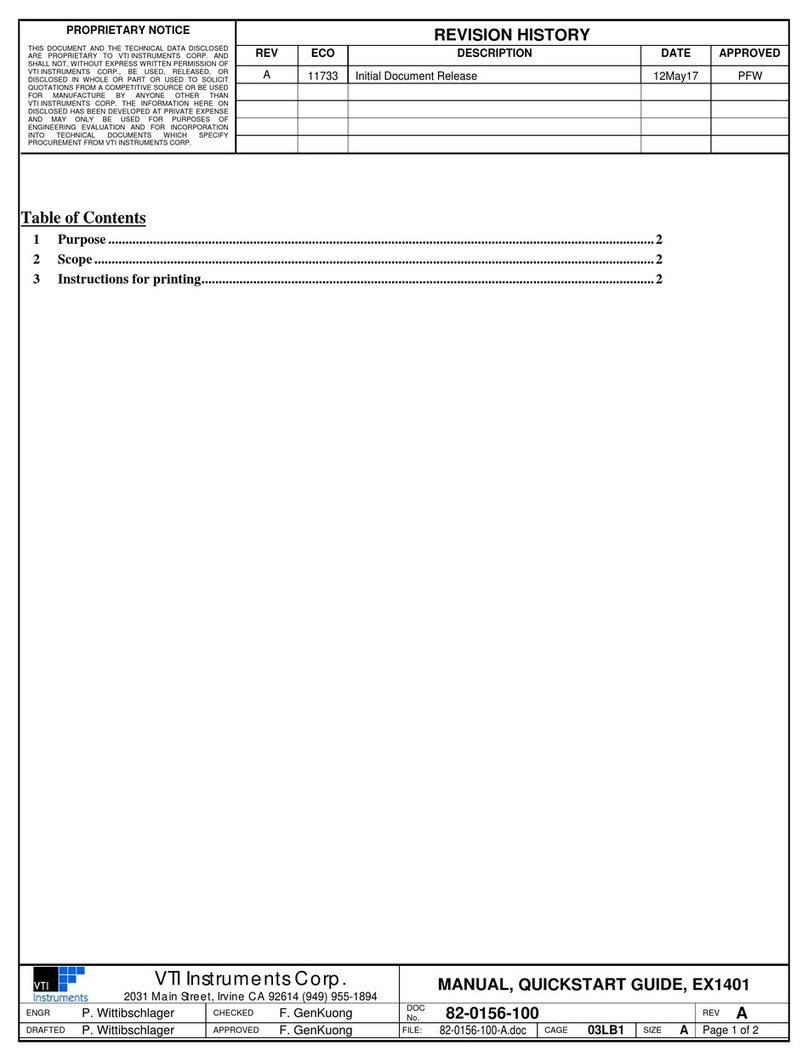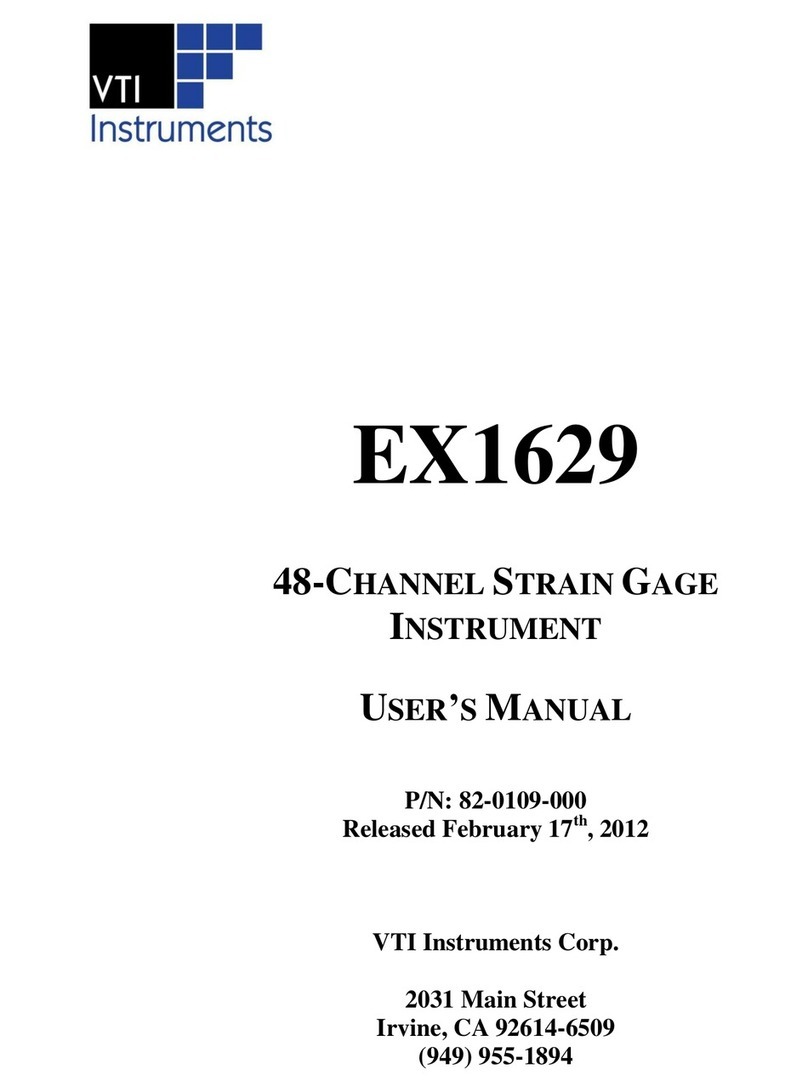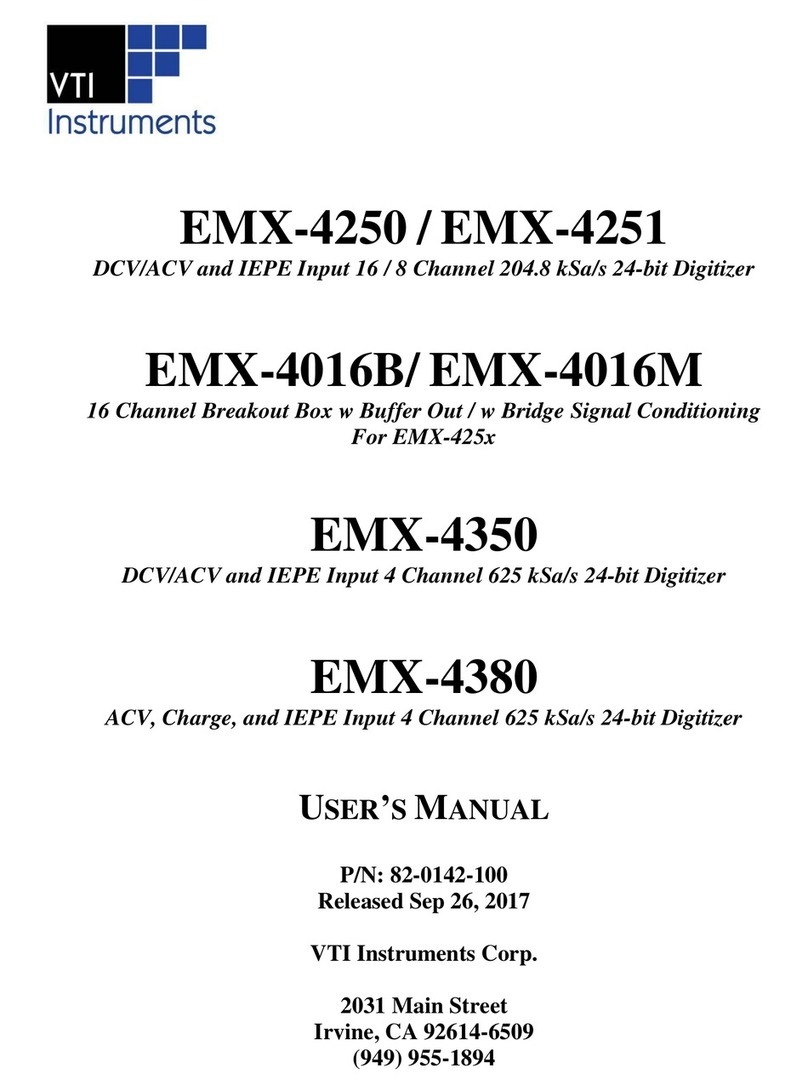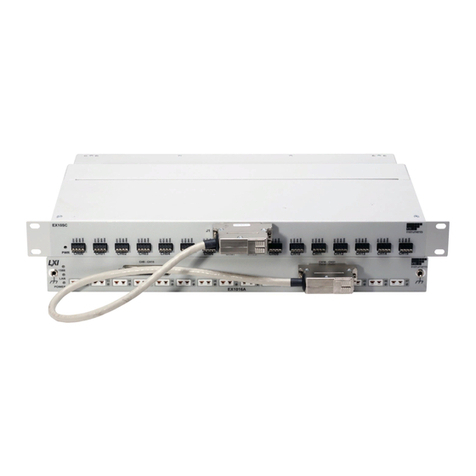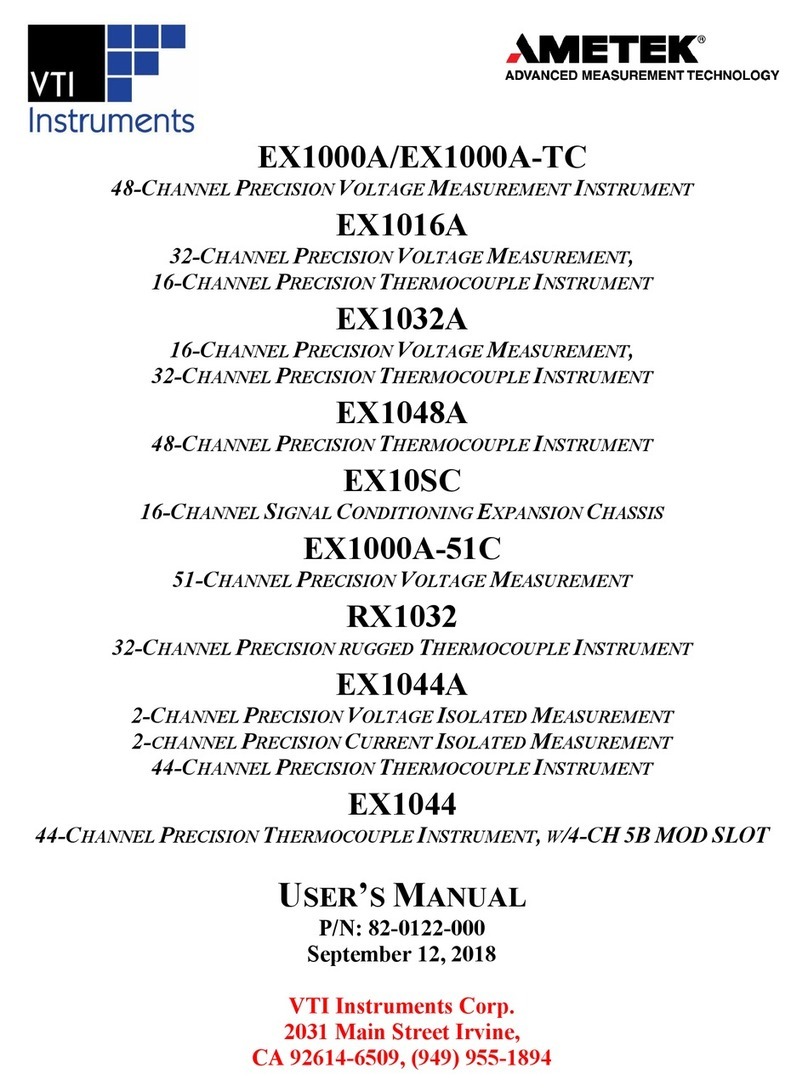www.vtiinstruments.com
EX1401 Preface 5
General Web Page Operation .............................................................................................................................50
Login...................................................................................................................................................................52
Index...................................................................................................................................................................53
Cards...................................................................................................................................................................54
Soft Front Panel..................................................................................................................................................55
USB Storage.......................................................................................................................................................58
Network Configuration.......................................................................................................................................59
Instrument Health ...............................................................................................................................................61
Time Configuration ............................................................................................................................................62
LXI Synchronization ..........................................................................................................................................63
LXI Identification...............................................................................................................................................64
Blink LAN Indicator...........................................................................................................................................65
Change Password................................................................................................................................................66
Nonvolatile Memory...........................................................................................................................................66
Upgrade ..............................................................................................................................................................67
Reset...................................................................................................................................................................67
Reboot.................................................................................................................................................................67
SECTION 5..................................................................................................................................................................68
INSTRUMENT DRIVERS............................................................................................................................................68
Overview ............................................................................................................................................................68
IVI Drivers..........................................................................................................................................................68
Header and Library Files...............................................................................................................................68
Drivers for Linux OS..........................................................................................................................................69
Header and Library Files...............................................................................................................................69
Building and Running Example Programs .........................................................................................................69
Windows Examples.......................................................................................................................................69
Linux Examples.............................................................................................................................................70
COMPATIBILITY......................................................................................................................................................70
Driver and Firmware Revisions..........................................................................................................................70
Driver API and Instruments................................................................................................................................70
DRIVER STRUCTURE ...............................................................................................................................................72
Measurement ......................................................................................................................................................72
Channels and Channel Groups............................................................................................................................72
Start, Arm, Trigger, and Alarm...........................................................................................................................73
Sync...............................................................................................................................................................74
Start...............................................................................................................................................................74
Arm ...............................................................................................................................................................74
Trigger...........................................................................................................................................................74
Trigger Holdoff .............................................................................................................................................76
Alarms...........................................................................................................................................................78
Retrieving Data...................................................................................................................................................79
FIFO Read.....................................................................................................................................................79
Streaming ......................................................................................................................................................79
Reference Clock and Time Stamps.....................................................................................................................80
LXI and LAN Events..........................................................................................................................................80
IVI Class Compliant Interfaces...........................................................................................................................80
MULTIPLE INSTRUMENTS........................................................................................................................................81
Initializing with Multiple Instruments ................................................................................................................81
Multiple Instrument Coordination ......................................................................................................................81
DATA ACQUISITION................................................................................................................................................83
Data Flow ...........................................................................................................................................................83
FIFO ...................................................................................................................................................................83
Data Streaming ...................................................................................................................................................83
Memory Streaming........................................................................................................................................84
Disk Streaming..............................................................................................................................................84
Callback Streaming .......................................................................................................................................84
Sampling Rates...................................................................................................................................................84
